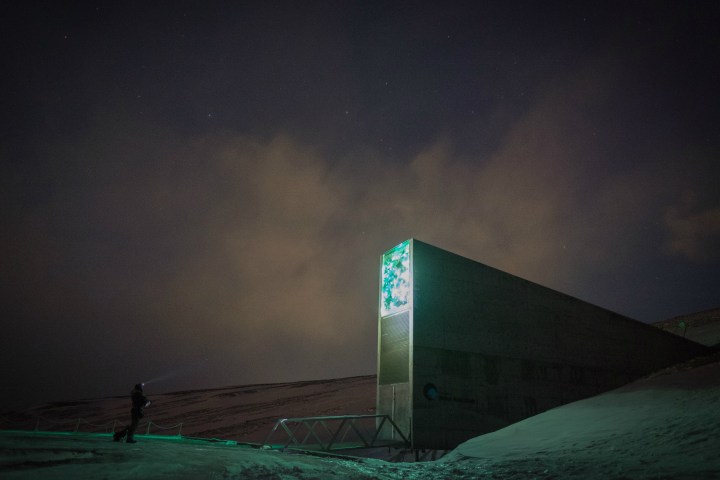
The Svalbard Global Seed Vault — which is owned by the Norwegian government — houses nearly one million of the world’s most valuable food-crop seeds. The complex is buried more than 400 feet inside of the Svalbard archipelago — midway between the Norwegian mainland and the North Pole — and was designed to function as a “fail-safe seed storage facility, built to stand the test of time — and the challenge of natural or man-made disasters,” per the official website.
According to a report by NASA and NOAA, 2016 was the warmest year on record. Due to these temperature shifts, melting permafrost and rainwater flooded the vault’s entry tunnel. Luckily, none of the seeds were damaged as result of this breach. However, the facility is now part of a $1.6 million investigation to determine ways to prevent similar incidents in the future. The conclusion of this report is expected in spring 2018.
For the time being, other preemptive measures have already been taken. For example, a transformer station — previously positioned in the tunnel — has been relocated due to its heat emissions, whereas a number of drainage ditches have been trenched into the mountain above the vault to channel water away from the tunnel.
One idea under consideration involves totally replacing the current entry tunnel. As it stands, this entry slopes downward towards the seed vault itself. An upward-sloping tunnel would more adequately combat flooding associated with melting permafrost. The Norwegian government has committed more than $4 million to cover the expected costs of these upgrades.
“The background to the technical improvements is that the permafrost has not established itself as planned. A group will investigate potential solutions to counter the increased water volumes resulting from a wetter and warmer climate on Svalbard,” explained the Norwegian government in a statement.
The seed vault is currently under constant monitoring with pumps in place to account for an additional flooding — which is certainly quite the ironic turn of events for a structure designed to exist long after an extinction-level event.


